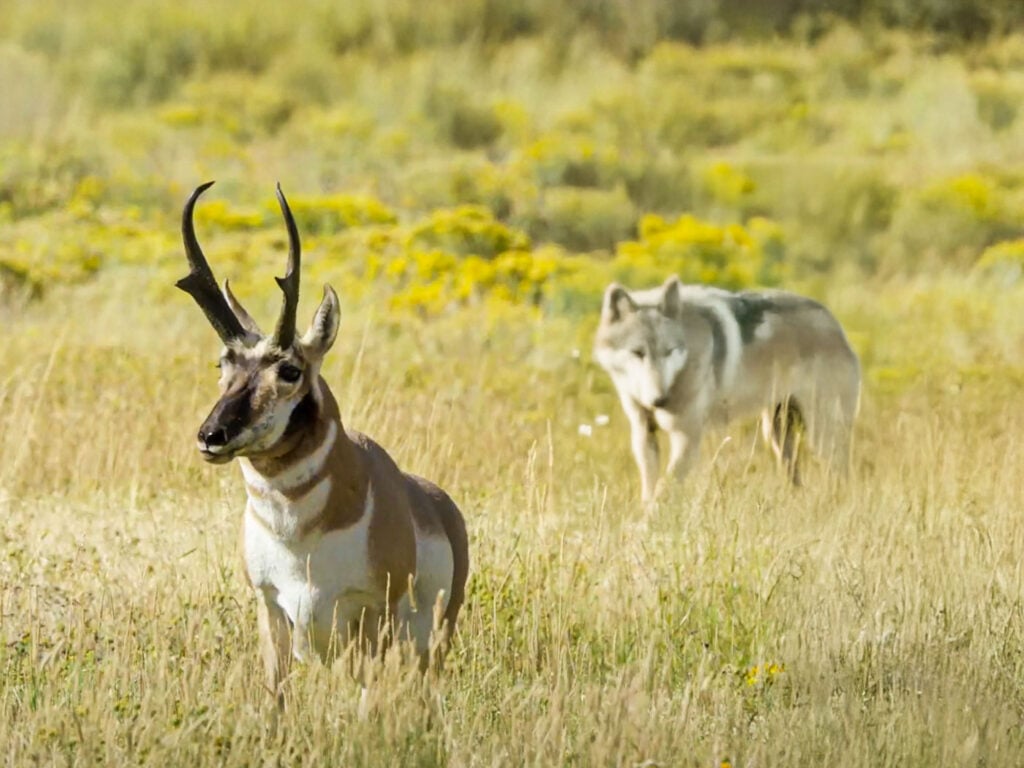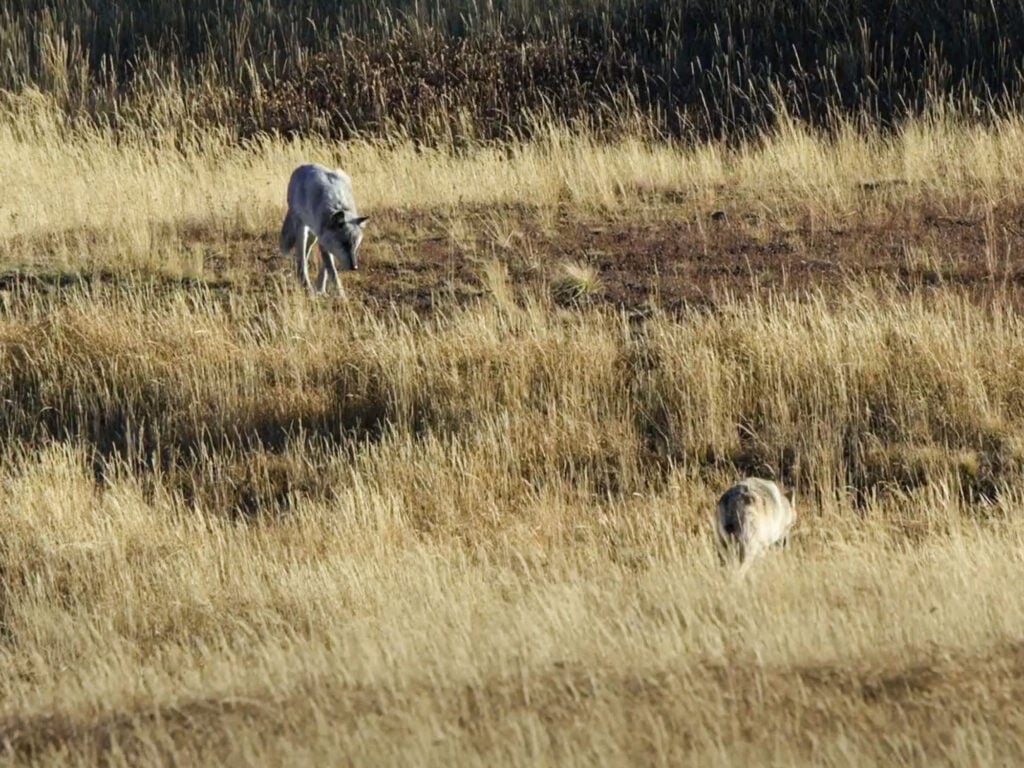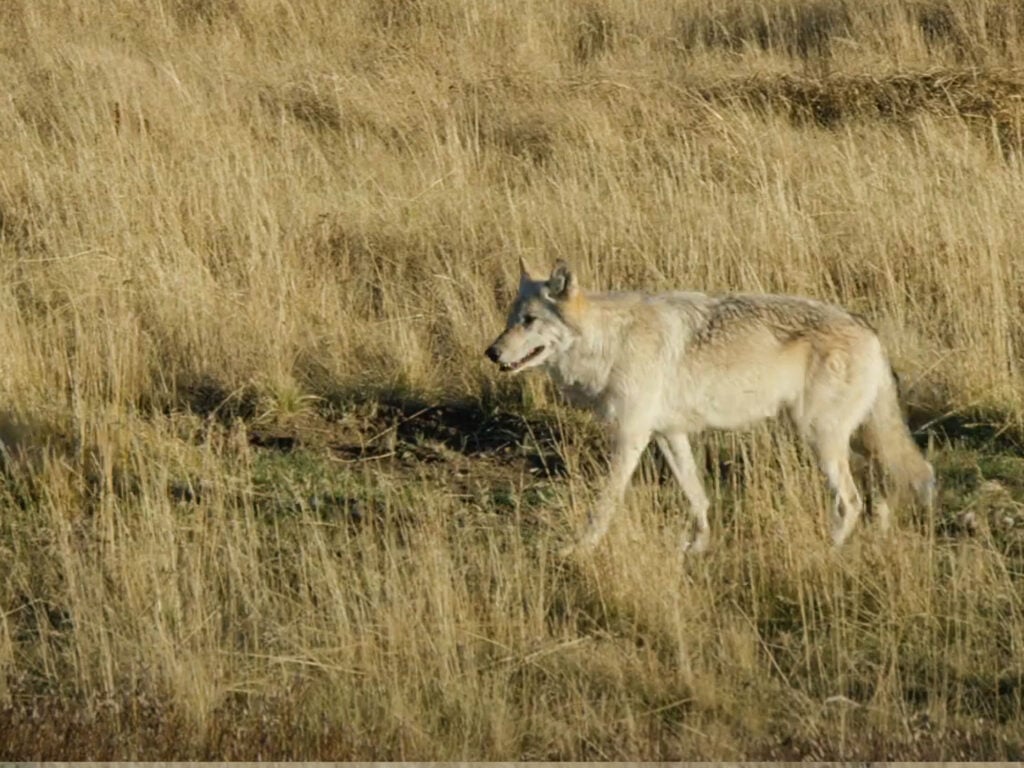
Watch The Sighting:
Seasoned wildlife filmmaker Judy Lehmberg has visited Yellowstone National Park many times. After spending countless hours documenting various species, she has gained incredible insight on many individual animals that reside in the park, such as wolf M755.
Judy visited Cascade Meadows several years ago where she observed the Wapiti wolf pack when M755 was the Alpha Male. The stunning backdrop of the yellow aspens and golden grasses made it the perfect time to witness the pack in action.

The Legacy Of The Wapiti Lake Pack
The Wapiti Lake Pack has carved out a legacy as one of Yellowstone’s most visible and beloved wolf packs. They are known for denning in areas near popular tourist routes, making them a favourite among researchers and wolf watchers eager to observe their behaviour.
The pack’s lineage can be traced back to some of the original wolves that were reintroduced to Yellowstone in 1995. They continue a genetic and ecological legacy that highlights the success of the park’s wildlife conservation efforts.

Born in 2008, wolf 755M became notable as the alpha male of the Lamar Canyon Pack. In 2012, his partnered female alpha passed, and he embarked on a solo journey across Yellowstone until he founded the Wapiti Lake Pack in Hayden Valley in 2015.

This achievement marked him as the only known male in Yellowstone’s history to establish two separate wolf packs. He passed a year later, but his legacy endures through the continued presence and study of the Wapiti Lake Pack in Yellowstone.
Hunting With Precision
Wolves of the Wapiti Lake Pack are expert strategists when it comes to the hunt. Operating within Yellowstone’s open valleys and forest edges, these wolves rely on teamwork, speed, and endurance to take down large prey like elk and bison.

Each wolf plays a specific role in the hunt where some drive the herd, others flank or block escape routes, and a few take down the prey. It’s a coordinated effort honed through generations of experience.
Life At The Top
As apex predators, the Wapiti Lake Pack sits at the top of Yellowstone’s food chain, but that status brings both privilege and pressure. Their position allows them to influence the ecosystem in powerful ways.
In a classic trophic cascade example, the wolves controlling prey populations affects vegetation growth and in turn, the health of the watershed.

Territorial disputes with rival packs, pressure from hungry scavengers, and the harsh Yellowstone winters challenge the pack’s survival. Amongst all odds, however, the Wapiti Lake wolves persist, defending their turf, and reinforcing their reign with each passing season.
Their continued success is a testament to adaptability and strength in one of North America’s wildest frontiers.
Get our Best Sightings as they Come in
Why The Wapiti Pack Matters
The high visibility and continued success of the Wapiti pack have provided crucial insights into their family dynamics, hunting strategies, and inter-pack relationships.
Additionally, they have helped boost public education on grey wolves and are a testament to strength in one of North America’s wildest frontiers.

The survival of the Wapiti pack mirrors the survival of Yellowstone itself: wild, beautiful, and constantly evolving. This sighting teaches us that wolves embody the power of family, the necessity of balance, and the wild heart of Yellowstone.
